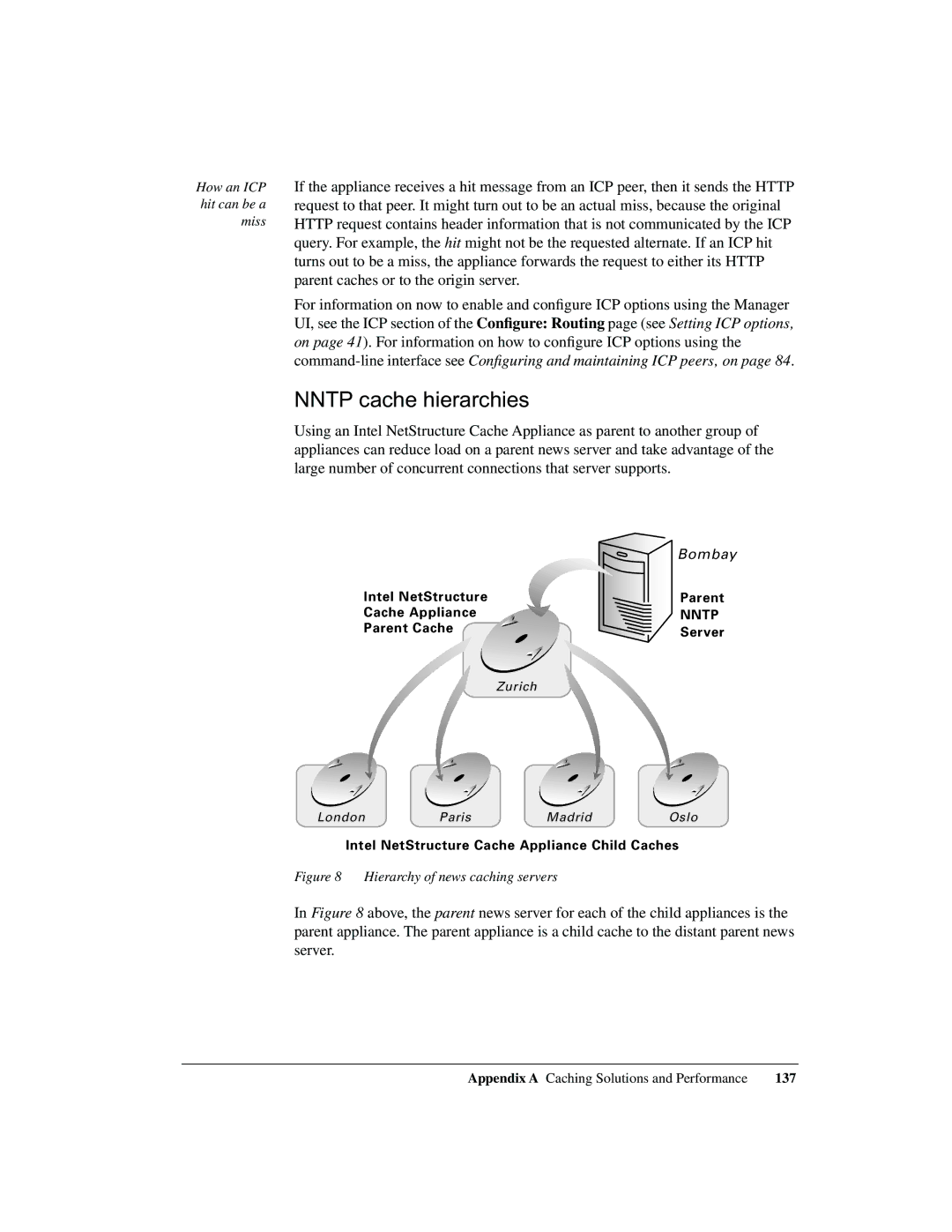
How an ICP
hit can be a miss
If the appliance receives a hit message from an ICP peer, then it sends the HTTP request to that peer. It might turn out to be an actual miss, because the original HTTP request contains header information that is not communicated by the ICP query. For example, the hit might not be the requested alternate. If an ICP hit turns out to be a miss, the appliance forwards the request to either its HTTP parent caches or to the origin server.
For information on now to enable and configure ICP options using the Manager UI, see the ICP section of the Configure: Routing page (see Setting ICP options‚ on page 41). For information on how to configure ICP options using the
NNTP cache hierarchies
Using an Intel NetStructure Cache Appliance as parent to another group of appliances can reduce load on a parent news server and take advantage of the large number of concurrent connections that server supports.
| Bombay |
Intel NetStructure | Parent |
Cache Appliance | NNTP |
Parent Cache | Server |
| Zurich |
London | Paris | Madrid | Oslo |
Intel NetStructure Cache Appliance Child Caches
Figure 8 Hierarchy of news caching servers
In Figure 8 above, the parent news server for each of the child appliances is the parent appliance. The parent appliance is a child cache to the distant parent news server.
Appendix A Caching Solutions and Performance | 137 |
